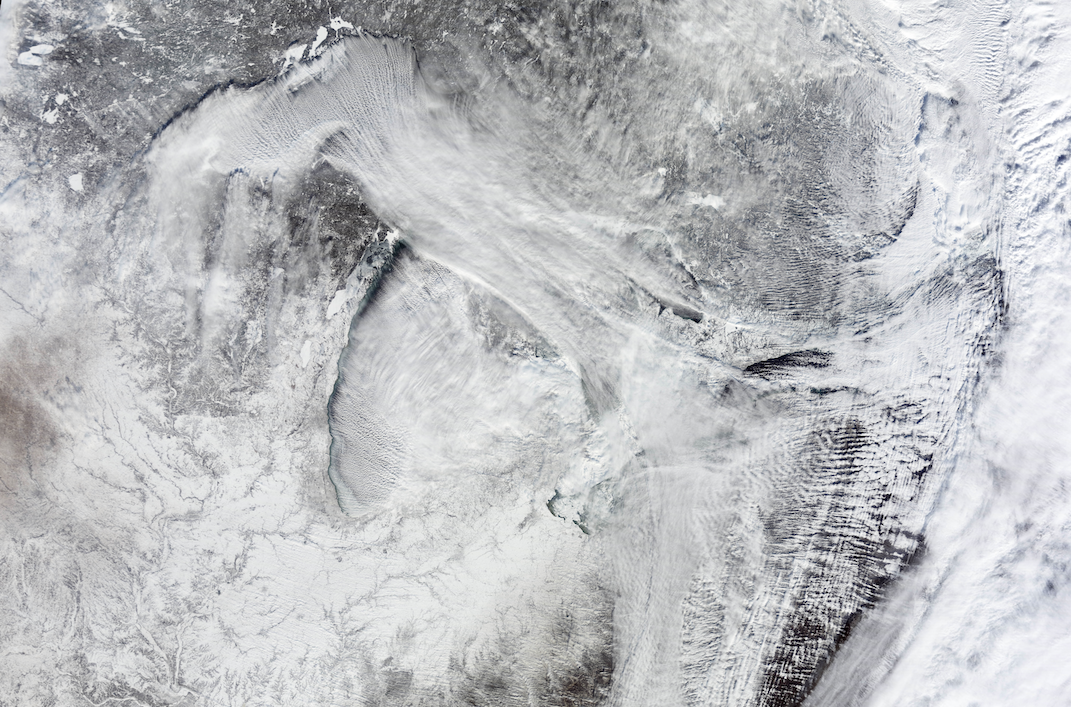
By Jack Nissen
For those who don’t remember the 2013-2014 winter, it was a season of icy wrath unleashed by the polar vortex.
Well, it appears memories of ice and record-low temperatures weren’t the only things it left behind. A new study shows memories of that event by people in Michigan’s Grand Traverse Bay region may have impacted what they think of climate change.
Their views are a little different than the national average, according to a recently published article in The Journal of Great Lakes Research.
A survey revealed more people in that region are alarmed or concerned by climate change than the national average. But it also found more people are doubtful or dismissive about climate change than the national average.
Statisticians call a result like this–where a graph showing the data has two peaks separated by a valley–a bimodal distribution. Typically, graphs would have just one peak.
So why do these numbers look different than the national surveys?
“It’s possible that we found that bimodal distribution because of the time of the study,” said Patricia Norris, an agricultural, food and resource economics professor at MSU.
It was conducted in the summer of 2014, after the polar vortex brought with it record low temperatures in the Great Lakes region, including wind chill temperatures in Michigan below minus 20 degrees Fahrenheit.
Because of how fresh the subfreezing temperatures and frozen lakes were in the minds of those surveyed, it was a frequent point of discussion and served as potential bias in the study, Norris said.
How much was the winter of 2013-2014 on the mind of those surveyed? Many of them discussed the bay freezing over and colder temperatures taking place, Norris said.
The study used “Global Warming’s Six Americas”–a survey that identifies six attitudes held by Americans when thinking about climate change: Alarmed, concerned, cautious, disengaged, doubtful and dismissive.
The Grand Traverse Bay region was chosen because of how close it is to the Lake Michigan coast.
Researchers focused on a coastal community because compared to other places, people tend to be more sensitive to little fluctuations in the climate, said Brockton Feltman, author of the study and former masters candidate with the Michigan State University Department of Community and Sustainability.
While the extreme winter event may have thrown a curveball in the results, the study confirmed other hypotheses, Norris said.
Norris and Feltman predicted that respondents with less education would care less about climate change and that those that spent more time outside would care more. Both proved to be true.
The connection between being outside and caring more about climate change is the most interesting takeaway, said Edward Maibach, the director of George Mason University’s Center for Climate Change and one of the authors of the study that developed the “Six Americas” used to characterize it.
“This makes perfect sense, but to the best of my knowledge, no one has actually found this before,” he wrote in an email. “It is consistent with other literature about the role of personal experience in convincing people of the reality of global warming, but it is a distinct, useful and interesting finding.”
This information can help us connect with people, depending on how they feel about climate change, Norris said.
Maibach said the study could lead to a long term change in perception.
“It is useful in the sense that lots of folks feel that Americans–especially our kids– don’t spend enough time outdoors,” Maibach said. “If encouraging them to spend more time in outdoor activities, which is good for them in many ways, also makes them more likely to become engaged in the problem of climate change, all the better.”
